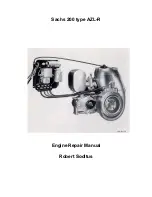
3 Precautions for use
−
8
−
3 Precautions for use
This section covers limitations and requirements the user should consider when
using the
CSK
series.
•
Do not apply an overhung load and thrust load in excess of the
specified permissible limit.
Be sure to operate the motor within the specified permissible limit of overhung load
and thrust load. Operating it under an excessive overhung load and thrust load may
damage the motor bearings (ball bearings). See page 18 for details.
•
Motor case temperature
When operating the motor, keep the motor’s case temperature to 100 °C (212 °F) or
below. If that temperature exceeds 100 °C (212 °F) due to operating conditions
(ambient temperature, operating speed, duty, etc.), the motor coil may be burned or
the life of the bearing shortened.
•
Driver’s heatsink temperature
When operating the motor, keep the driver’s heatsink temperature to 80 °C (176 °F)
or below. If the temperature exceeds 80 °C (176 °F), the driver may be damaged.
•
Provide a measure to retain the position of the equipment’s movable
part when this unit is used in an vertical application.
The motor loses its holding brake force when the power is cut off. Therefore,
provide a measure to retain the position of the equipment’s movable part when this
unit is used in an vertical application such as a lifter.
•
Conduct the insulation resistance measurement or withstand voltage
test separately on the motor and the driver.
Conducting the insulation resistance measurement or withstand voltage test with the
motor and driver connected may result in injury or damage to equipment.
•
Preventing electrical noise
See 5.6 ”Installing and wiring in compliance with EMC Directive” on page 20 for
measures with regard to noise.
•
Check the colors of motor leads and connect them correctly and
securely.
Wrong connection of leads or poor contact may damage the driver.
•
Regeneration
When a large inertial load is operated at high speed, regenerative energy will
generate and increase the power supply voltage, which can damage the driver.
Review the operating condition and make sure regenerative voltage will not
generate.









































